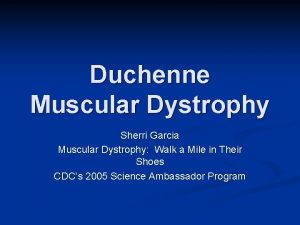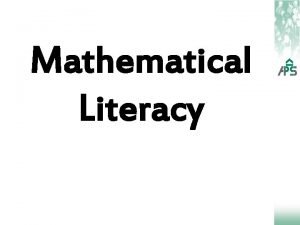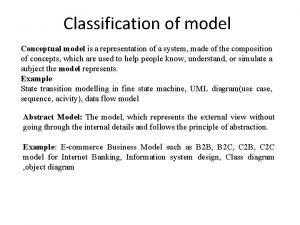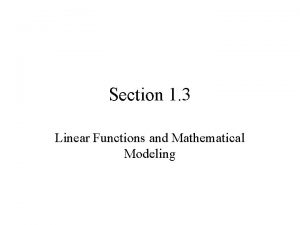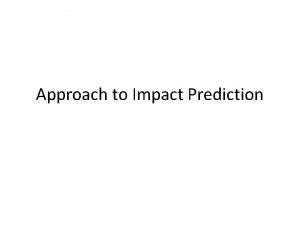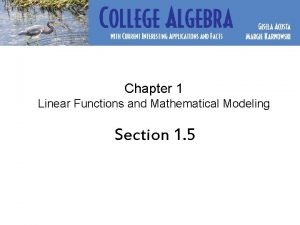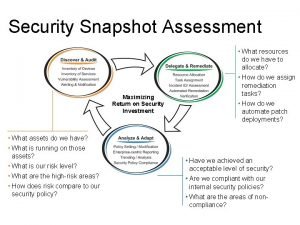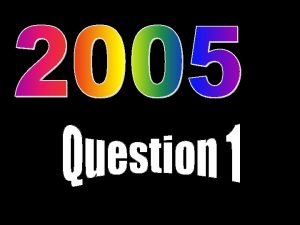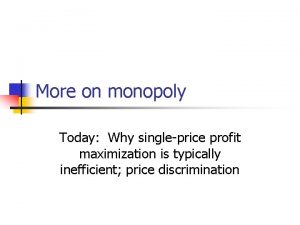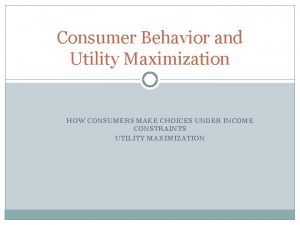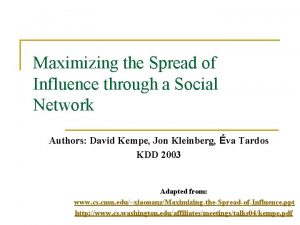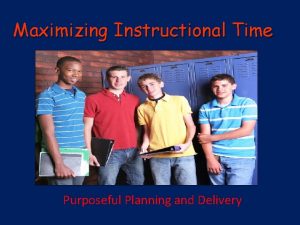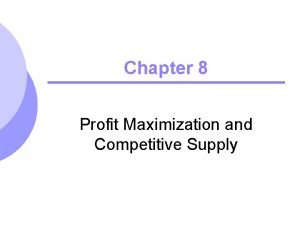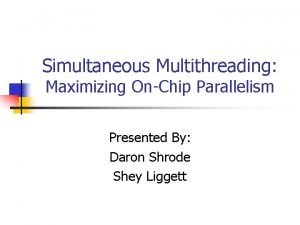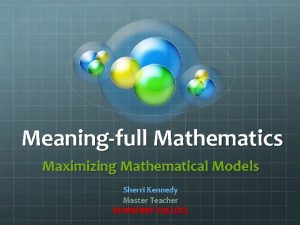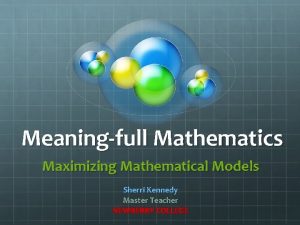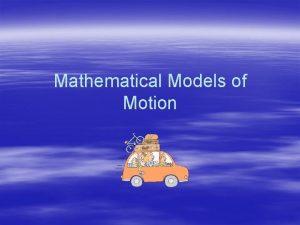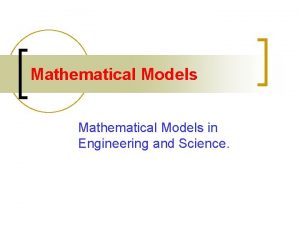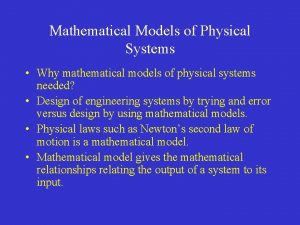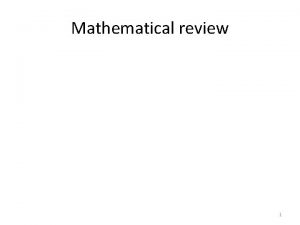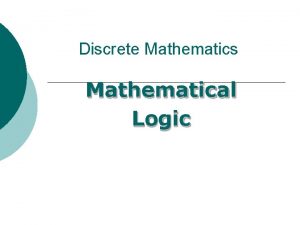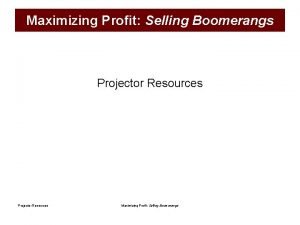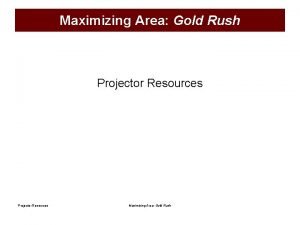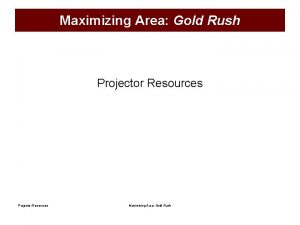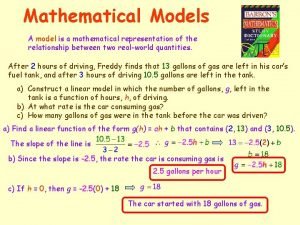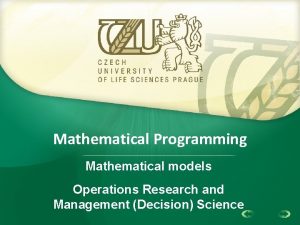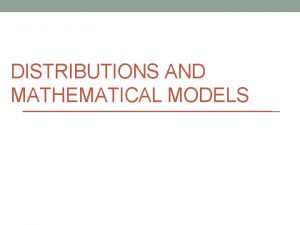Meaningfull Mathematics Maximizing Mathematical Models Sherri Kennedy Master






















- Slides: 22

Meaning-full Mathematics Maximizing Mathematical Models Sherri Kennedy Master Teacher

Essential Question for Teachers How do you lead students to develop connections between mathematical models and symbolic representations?

Teaching with Problems “The single most important principal for improving the teaching of mathematics is to allow the subject of mathematics to be problematic for students. ” Teaching Student-Centered Mathematics John Van De Walle & Louann H. Lovin

Teaching with Problems Before During After • Activate student thinking through essential question and student engagement • Be sure the task is understood • Clarify expectations for student behavior, allotted time, and work products to be completed • Let go! • Listen carefully • Facilitate through questioning • Observe and assess • Give problem extensions as necessary to promote continuous student engagement • Accept student solutions without evaluation • Have students justify results and methods used • Look for misunderstanding and/or common errors • When different solutions arise, have students prove or disprove through class discussion

Informative Assessment Probe Consider these three stories and four graph models: Match each story with one of the models. Label the axes, and explain what different parts of the graph mean in terms of the situation you have chosen Story 1 A parachutist is taken up in a plane. After she jumps, the wind blows her off course and she ends up tangled in the branches of a tree. Story 2 Tomas puts an inheritance in the bank and leaves it there to earn interest for several years. Yesterday, he withdrew half the amount.

Probe continued Story 3 Gerry orders 30 cubic meters of gravel for his new driveway. He is shocked when he sees the enormous pile delivered by the dump truck, but he rents equipment to spread the gravel onto the driveway. On the first day he is enthusiastic and moves half the gravel from the pile to his driveway. On the next day he is tired and moves only half of what is left. On the third day Gerry has less time, so he again moves half of what is left. He continues in this way until the pile has practically disappeared.

Probe 2 Alejandro is making ballots for an election. He starts by cutting a sheet of paper in half. He then stacks the two pieces and cuts them in half. He stacks the resulting four pieces and cuts them in half. He repeats this process, creating smaller and smaller pieces of paper. After each cut Alejandro counts the ballots and records the results in a table. Make a table that shows what Alejandro did. Look for a pattern in the way the number of ballots changes with each cut. If Alejandro made 20 cuts, how many ballots would he have? How many with 30 cuts?

Probe 2 How does the table show the pattern of change? Sketch a graph of the table you made. How does the graph show the pattern of change?

Mars Colony

Problem 1. 1 Staking a Claim Imagine it is the year 2100 and a rare and precious metal has just been discovered on the planet Mars. You and hundreds of adventurers are traveling to the planet to stake your claim. Each new prospector is allowed to claim any piece of land that can be surrounded by 20 meters of laser fencing. You want to arrange your fencing to enclose the maximum area possible.

Staking a Claim Suppose the Mars colony adds the restriction that each claim must be a rectangle. A. Sketch several rectangles with a perimeter of 20 meters. Include some with small areas and some with large areas. Label the dimensions of each rectangle. B. Make a table showing the length of a side and the area for each rectangle with a perimeter of 20 meters and whole-number side lengths.

Staking a Claim C. Make a graph of your (length of a side, area) data. Describe the shape of the graph. D. If you want to enclose the greatest area possible with your fencing, what should the dimensions of your fence be? How can you use your graph to justify your answer?

Problem Follow-Up Suppose the dimensions of the rectangle were not restricted to whole numbers. Would this change your answer to part D? Explain. Suppose the shape of the claim were not restricted to a rectangle. How could you arrange your 20 meters of fencing to enclose a greater area?

Quadratic Relationships Quadratic relationships are characterized by their U-shaped graphs called parabolas. The Gateway Arch in St. Louis, Missouri, is a real life example of a parabola.

Problem 1. 2 Reading a Graph How does this graph compare with the graph in Staking a Claim? Compare linear, exponential, and quadratic graphs. Compare the tables of linear, exponential, and quadratic relationships.

Connections Suppose a rectangular field has a perimeter of 300 yards. The relationship between the length and the width of the field is represented by the equation l = 150 – w. Is the relationship between the length and the width quadratic? How do you know?

“Regardless of the grade level of the students, the mathematics should be imbedded in problems that involve concrete models,

And students should use informal language to describe patterns and functional relationships before using symbolic notation. ” Kathleen Cramer “Using Models to Build An Understanding of Functions” Mathematics Teaching in The Middle School

Assessing in a Problem-Based Classroom Use a problem for the assessment — problem—any task that has no prescribed or memorized rules or solution method A good problem-based task: — promotes learning — permits every student to demonstrate knowledge — provides real-world or authentic contexts — include oral justification for answers

Assessing for Understanding Mr. Defore’s Do-Over A Little Story for Teachers Story by David Puckett Illustrations by Andrea Yost

Research base Lappan, Glenda, Fey, James T. , Fitzgerald, William M. , Friel, Susan N. , Phillips, Elizabeth Difanis (2002). Thinking with Mathematical Models. Connected Mathematics. Glenview, Illinois: Prentice Hall. Lappan, Glenda, Fey, James T. , Fitzgerald, William M. , Friel, Susan N. , Phillips, Elizabeth Difanis (2002). Frogs, Fleas, and Painted Cubes. Connected Mathematics. Glenview, Illinois: Prentice Hall. Puckett, David (2005). Mr. De. Vore’s Do-Over. Westerville, OH: National Middle School Association. Rose, Cheryl M. , Arline, Carolyn B. , (2009). Uncovering Student Thinking in Mathematics. Thousand Oaks, CA: Corwin Press Van De Walle, John, Lovin, Lou. Ann H. , (2006) Teaching Student-Centered Mathematics. Boston, MA: Pearson Learning. What Moves You: How to get the most from Essential Questions (2009). Learning Focused

Recommended Resources
 Sherri kennedy
Sherri kennedy Sherri schneider
Sherri schneider Sherri garcia
Sherri garcia Mathematical economics vs non mathematical economics
Mathematical economics vs non mathematical economics Mathematical literacy pictures
Mathematical literacy pictures Types of mathematical models
Types of mathematical models Conceptual physical and mathematical models are used to
Conceptual physical and mathematical models are used to Linear functions as mathematical models
Linear functions as mathematical models Mathematical models for impact prediction
Mathematical models for impact prediction Linear functions as mathematical models
Linear functions as mathematical models Modeling real world data with sinusoidal functions
Modeling real world data with sinusoidal functions What is the difference between modals and semi modals?
What is the difference between modals and semi modals? Maximizing security roi
Maximizing security roi Bestmilk
Bestmilk Monopoly profit maximizing price
Monopoly profit maximizing price Profit maximizing price
Profit maximizing price Onboarding new employees maximizing success
Onboarding new employees maximizing success Utility maximizing combination
Utility maximizing combination Maximizing the spread of influence through a social network
Maximizing the spread of influence through a social network Maximizing instructional time in the classroom
Maximizing instructional time in the classroom Profit maximization
Profit maximization Profit maximizing output
Profit maximizing output What is simultaneous multithreading
What is simultaneous multithreading


